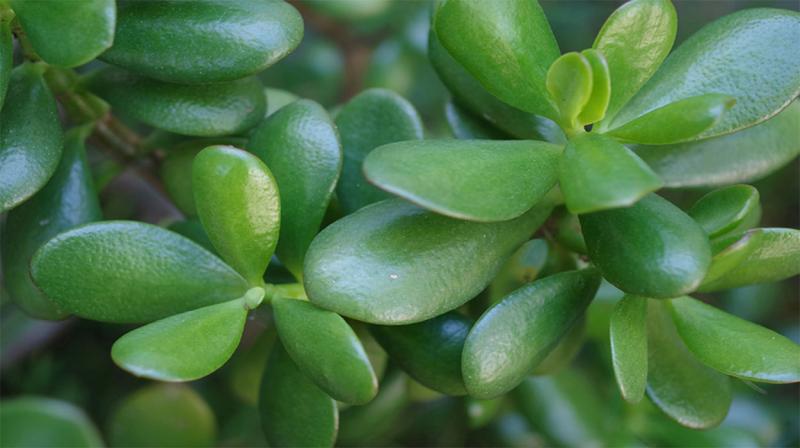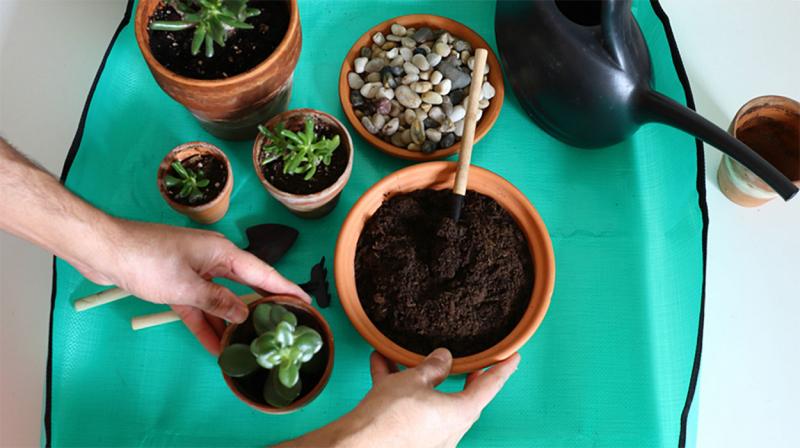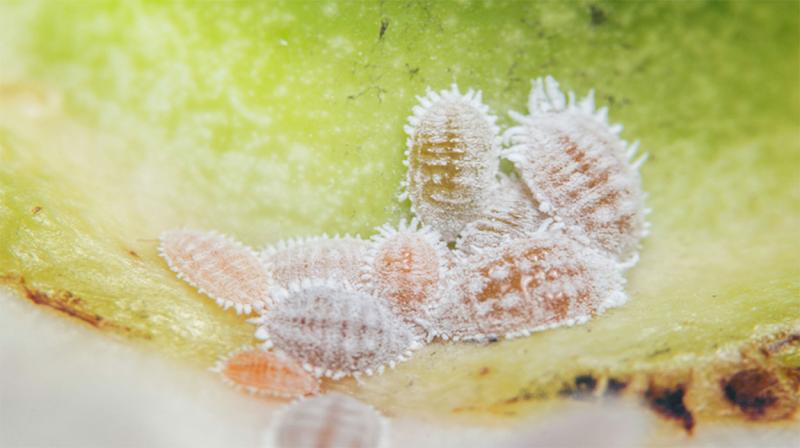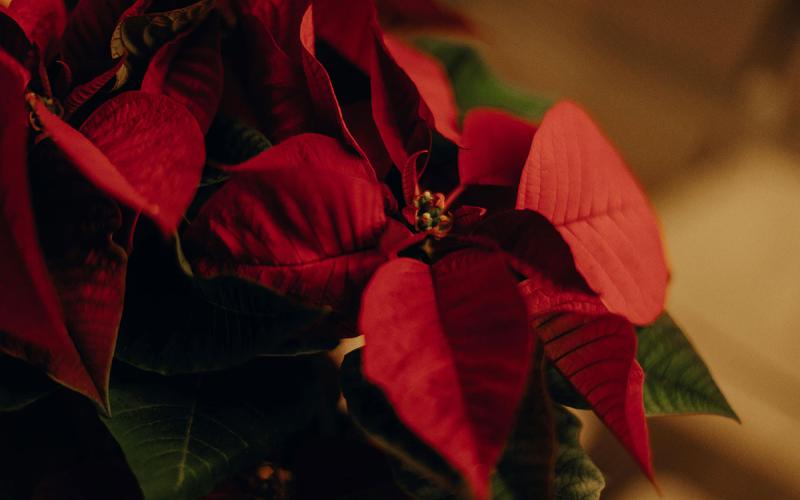Written by Cindy Schnabel under the direction and review of Kristine Lang and Sydney Trio.
Description

The jade plant (Crassula ovate) is a succulent that can live approximately 100 years with proper care. It is a native to South America and Mozambique. There are over 300 different cultivars of jade plants.
Jade plants have thick, oval-shaped leaves. The stems are thick and woody, thus making it look like a small tree.
It is a slow-growing plant. Over time, a mature jade plant can grow to be six feet tall and three feet wide.
This plant is often known as a “friendship" or "money" plant. In fact, in some cultures, the jade plant is given as a housewarming gift, as it symbolizes good luck, fortune, and prosperity.
Plant Care

- Soil: Since it is a succulent, a well-drained soil medium is essential. A pre-mix cactus soil is good. If using potting soil, mix it with sand, perlite, or small pebbles. This is done so that the soil does not retain moisture.
- Water: Poke your finger in the soil to check for moisture. If it is dry, water the plant. With jade plants, less is more. It is better to error on the dry side. Over-watering causes root rot. Squishy or waterlogged leaves indicate that the plant is being given too much water. Leaf drop is a symptom of watering issues. Shriveled or wrinkled leaves mean the plant is thirsty. Salts and minerals are harmful to the plant. For this reason, use filtered water or set out tap water over night to allow the chemicals to evaporate.
- Light: At least six hours of indirect light is required each day. Too little light will make the plant leggy. Too much light will scorch a young plant’s leaves. To achieve red tips on some species, you can put them in a brighter location.
- Temperature: Temperatures that range from 60 to 75 degrees Fahrenheit are ideal. This is one of the reasons that jade plants are great as indoor plants.
- Fertilizer: Use a balanced fertilizer once a year. This should be done in early spring, because the plant goes dormant in the winter months.
- Repotting: A young plant should be repotted every few years. A mature plant needs to be repotted every 4 to 5 years. Repotting will encourage new growth.
Problems and Solutions

- Pests: Mealybugs, spider mites, and scale can be a problem. Mealybugs will look like white, moldy patches, usually on the underside of the leaves. To take care of these pests, wipe the leaves with a cotton swab that has been soaked in alcohol. A word of caution, succulents of all kinds are susceptible to insecticides and oil, which are normally used to eliminate these pests.
- Diseases: Powdery mildew can be a problem, but it is uncommon for indoor plants. Root rot is brought in because of overwatering. Bacterial soft rot is when the stems and branches collapse. The interior of the plant is soft and mushy. There is no solution for this disease, and you will end up discarding the plant.
A warning here to keep your cats and dogs away from this plant, because it is toxic to pets. Rashes can happen if the sap touches your skin. Environmental conditions, such as warm temperatures, bright light, and tolerance to neglect make this a must. Jade plants are an easy-growing succulent that will thrive in your household for years to come.
References and Resources
- Jade Plant, Clemson Cooperative Extension.
- Jade Plant, Crassula ovata, University of Wisconsin Extension.


